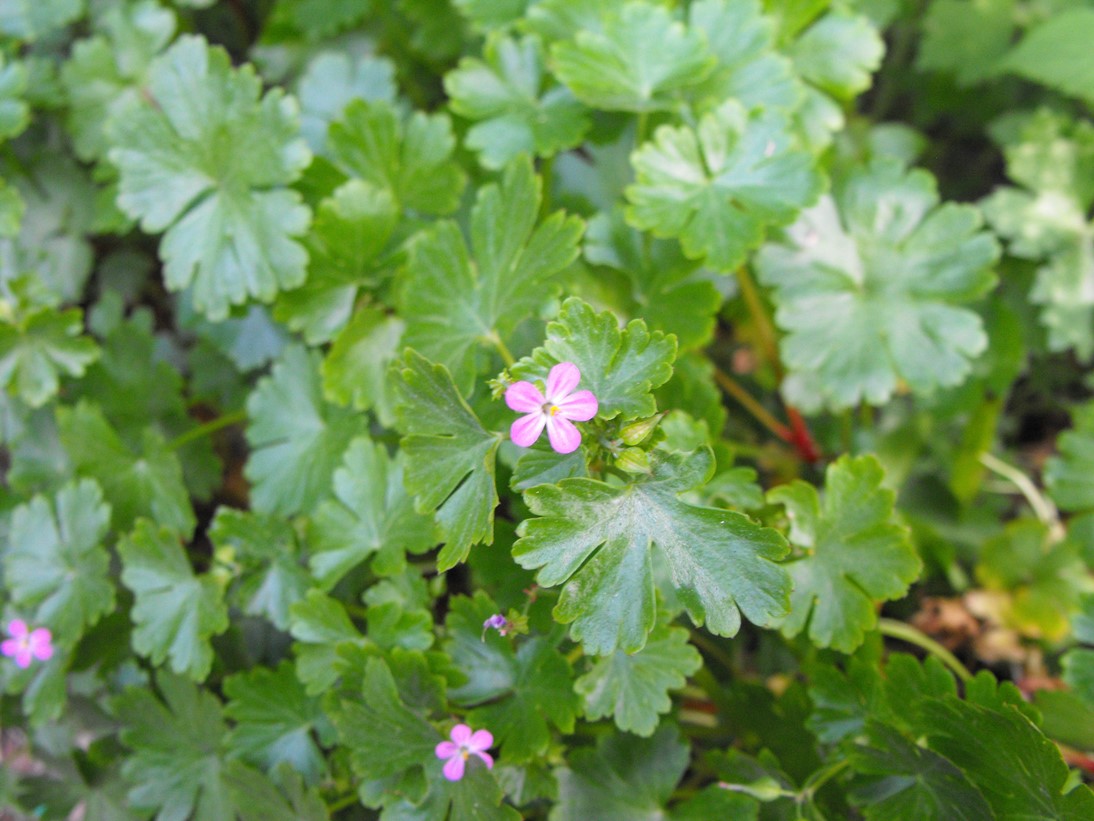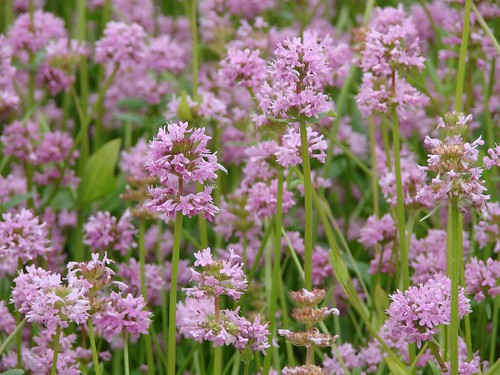Introduced Species: Shining geranium (Geranium lucidum)
Description: Shining geranium grows predominantly as an annual weed, though it may become biennial depending on moisture conditions. It is predominantly a forest understory species, very shade-tolerant and typically no more than 30 cm (12”) tall in the Pacific Northwest. Stems are often reddish, especially when growing in poor or rocky soil, and grow from a weak central root. Leaves are rounded, deeply lobed with a waxy appearance that makes dense infestations easy to recognize; these also turn red toward the end of summer, or when the plant is stressed. Shining geranium flowers are pink with five petals, roughly 1 cm (0.4 in) across, and bloom in spring through late July, interspersed within the leaves (not above them). It is native to Eurasia and North Africa.
Spread: Shining geranium spreads primarily by seed, germinating in late winter; human and wildlife activities are major contributors to dispersal, though the explosive seed capsules are also quite efficient distributors, send seeds up slopes, into trees, and other places well above the level of the parent plant. Shining geranium can readily form monotypic stands (“carpets” is perhaps more apt), displacing native plants in oak woodlands, riparian areas, and forested habitats.
Control: This is definitely an “ounce of prevention” species; finding it early and keeping it from going to seed is key to control. Thankfully, its weak, shallow roots make hand-pulling quite simple for small infestations. It may be possible to smother larger populations with cardboard and thick mulch; however, once these break down, any seed present in the soil will germinate, so it will be necessary to follow up with hand removal of any new plants. Note that seeds are viable before the capsules explode, so removal before or during flowering is best.
Native Replacement: Rosy plectritis (Plectritis congesta) is a pink-flowered native annual that blooms in spring, preferring sun or light shade, that readily self-seeds. An excellent early-season pollinator plant, it is dry tolerant and deer-resistant.


